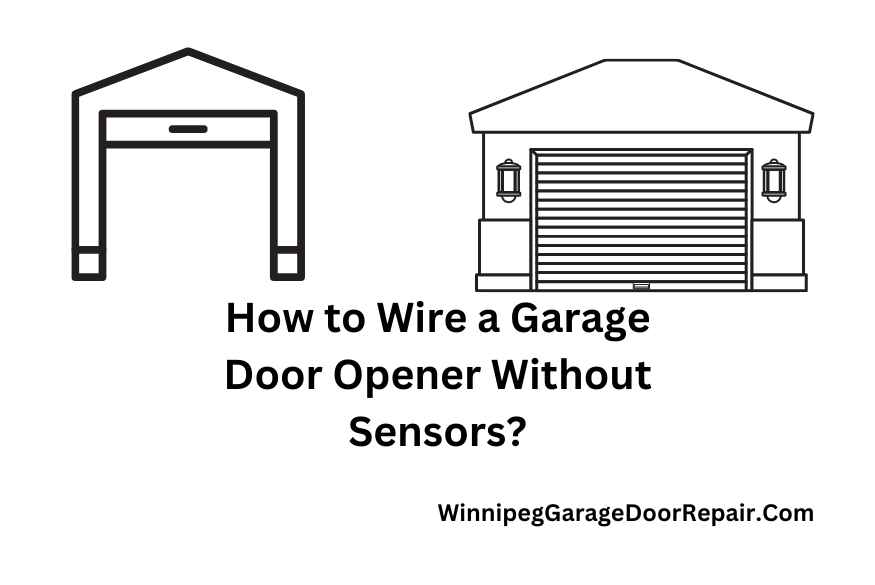In the realm of home automation and security, garage door openers play a pivotal role in providing convenience and safety to homeowners. A crucial component of these systems is the safety sensors, designed to prevent accidents by stopping or reversing the garage door if an obstruction is detected.
Maintaining these systems, including timely garage door opener repair, ensures their reliability and the safety of your home. This article aims to underscore the significance of these sensors, delve into the mechanics of garage door openers, and highlight the critical nature of adhering to safety standards, while also emphasizing the importance of professional maintenance and repair to keep these systems functioning optimally.
The Role of Safety Sensors
Garage door safety sensors, introduced in response to increasing safety concerns, have become a mandatory feature in garage door systems since the early 1990s. These sensors typically consist of two units placed on either side of the garage door, close to the ground.
They create an invisible beam; if interrupted, the door automatically stops closing and reverses direction. This feature is crucial for preventing injuries and property damage, making it an indispensable part of the garage door mechanism.
Understanding Garage Door Openers
A garage door opener is a motorized device that opens and closes garage doors, controlled by switches on the garage wall, remote controls, or even smartphones.
If you’re considering an upgrade or need to replace a malfunctioning unit, you might find yourself thinking, Should I get another garage door opener? This consideration is crucial, especially when you acknowledge the complexity of wiring a garage door opener properly.
Wiring involves not only making electrical connections but also integrating safety mechanisms like the sensors, ensuring everything operates smoothly and safely.
The Importance of Professional Installation
Given the complexities involved in installing and wiring garage door openers, professional installation is strongly recommended.
Professionals have the expertise to ensure that all components, especially safety sensors, are correctly installed and functioning. This not only ensures the system’s reliability but also its compliance with safety standards and regulations.
Regular Maintenance and Safety Checks
To maintain the efficiency and safety of your garage door opener, regular maintenance is essential. This includes checking the alignment of safety sensors, testing the auto-reverse mechanism, and inspecting for wear and tear on mechanical parts.
Homeowners should periodically test the sensors by placing an object in the door’s path to ensure the auto-reverse function activates correctly.
Troubleshooting Common Issues
Common issues with garage door openers can often be traced back to problems with the sensors. Misalignment, dirt buildup, or direct sunlight can interfere with the sensor’s function, preventing the door from operating correctly.
Regular cleaning and realignment of the sensors can resolve many of these issues, ensuring the safety and functionality of the garage door opener.
The Risks of Bypassing Safety Features
“While some may consider bypassing the safety sensors for various reasons, it’s important to understand the significant risks involved. Doing so removes a critical safety feature, potentially leading to accidents or injuries.
Similarly, when attempting to program your garage door opener to your car, it’s crucial to follow the manufacturer’s instructions carefully to maintain the integrity of all safety features.
Bypassing safety features can void warranties and go against local building codes and regulations, leading to legal and financial repercussions. Always prioritize safety and compliance to ensure a secure and functional garage door system.”
Legal and Ethical Considerations
Adhering to safety standards and regulations is not only a legal obligation but also an ethical one. Manufacturers and installers must ensure that garage door openers, including their safety features, meet specific safety standards.
Homeowners, in turn, have a responsibility to maintain these safety features, recognizing their role in preventing accidents and protecting lives.
Conclusion
The wiring and installation of garage door openers, with a particular emphasis on safety sensors, highlight the intersection of convenience, safety, and responsibility in home automation. While the allure of DIY projects can be strong, the importance of professional installation and adherence to safety standards cannot be overstated. As technology advances and garage door systems become increasingly sophisticated, the commitment to safety remains paramount.
Homeowners are encouraged to view their garage door openers not just as tools of convenience but as integral components of their home’s safety ecosystem. By prioritizing safety, ensuring proper installation and maintenance, and understanding the function and importance of safety sensors, we can protect our homes, our loved ones, and ourselves from potential harm.







